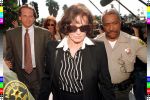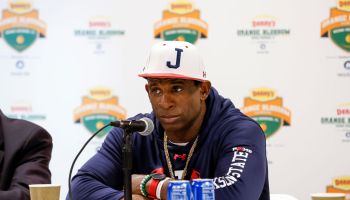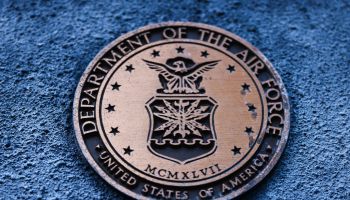DETROIT — As more U.S. buyers head back into auto dealerships, automakers are jostling for their attention with sweetened deals.
ALSO READ: 25 Reasons We Love “A Different World”
The major automakers knocked a little extra off sticker prices in February, giving additional momentum to a recovery in sales that started last year. The good news for buyers is that discounts are likely to continue into the spring, as older models like the Toyota Corolla and Chevrolet Malibu duke it out with newer models like the Ford Focus and Hyundai Elantra.
“Sales rates are starting to exceed expectations. It’s an opportunity to grab sales from others if you’re aggressive enough and you have the right product,” said Jesse Toprak, vice president of industry analysis at auto pricing site TrueCar.com.
All the major car companies reported double-digit gains for last month. Improving economic conditions and consumer confidence could mean more gains in the months ahead.
But automakers’ results came on a day when oil again approached $100 per barrel on continued unrest in the Arab world. Rising oil prices could still put a damper on the industry’s recovery, GM CEO Dan Akerson cautioned on the sidelines of the Geneva Auto Show.
“I don’t think the industry learned a lot of lessons from 2008. They will this time around,” Akerson said of the 2008 spike in U.S. gas prices to above $4 per gallon, which rapidly changed buying habits.
So far, gas prices aren’t having much impact on buying decisions. At AutoNation Inc., the country’s largest dealership chain, customers are increasingly considering fuel prices when they decide what model to buy. But there are other factors, said President and Chief Operating Officer Mike Maroone. The company sees the “freak-out point” that changes people’s car-buying behavior at $4.25 to $4.50 per gallon, he said.
“We’re still a long ways from that,” he said. The nationwide average for a gallon of regular gas Tuesday was $3.375, according to AAA.
Auto sales rose 27 percent in February as the economic recovery continued and consumers felt more comfortable taking on a car payment. The strongest showing came from General Motors Co. and Toyota Motor Corp. with increases of more than 40 percent.
The monthly sales rate, when adjusted for seasonal differences and projected out for a full year, was 13.4 million vehicles. That would make it the highest rate since the government’s Cash for Clunkers rebates juiced sales in the summer of 2009.
Discounts are one reason for the impressive sales.
Automakers had largely been able to wean themselves off deals, which hurt their profits, since the industry ran into financial trouble in 2009. But GM fell off the wagon in January, raising incentives by $400 per vehicle. Competitors followed in February, with Chrysler, Ford, Nissan and Toyota all increasing spending on incentives by 6 percent or more over the previous month, TrueCar estimated.
Chrysler Group offered zero-percent financing for 36 months on the new 200 sedan. GM offered $7,000 in dealer cash on the Cadillac DTS and STS sedans. Toyota put $4,000 on the hood of the 2010 Lexus HS hybrid.
Still, incentives are only part of the story.
“A $400 increase doesn’t drive these kinds of share gains and sales gains,” GM’s vice president of U.S. sales Don Johnson said.
Also in the mix is economic recovery, better auto loan availability, low interest rates, increasing consumer confidence and a return of leases, which were almost absent in February of last year because used-car values dropped so dramatically during the downturn. GM said 22 percent of its individual buyers were leasing in February, up from 15 percent in January.
“I would connect all the dots together,” said Paul Ballew, a former chief economist at GM who is now at insurance firm Nationwide.
Analysts don’t expect the incentive skirmish to reach a full-blown discount war. Detroit automakers have fewer factories and no longer have to offer huge amounts of cash on their cars and trucks to keep the plants going. GM, for instance, had average incentives of $4,750 per vehicle in March of 2009, its highest level in 10 years as it headed toward bankruptcy, according to Edmunds.com. Last month, incentives cost GM $3,849 per vehicle. Johnson said discounts should be lower as the year goes on.
Rising gas prices didn’t dampen Americans’ appetites for trucks and SUVs. GM said sales of its full-size pickup trucks rose 65 percent compared with February of last year, a sign that businesses are continuing to replace work trucks. Sales of Chrysler’s Ram truck brand rose 81 percent.
Crossovers like the Chevrolet Equinox — which saw sales jump 92 percent — also continued to be a force in the marketplace. Overall, GM saw a whopping 49 percent jump in sales compared with February of last year.
Toyota’s gain was similar, at nearly 42 percent. But sales in the comparable month were poor because of a string of highly publicized safety recalls. Toyota said it saw strong sales toward the end of the month as it launched its “Number One for a Reason” marketing campaign. The RAV4 crossover was up 85 percent, while the Camry — the top-selling car in the U.S. — was up 64 percent.
Ford’s 10 percent gain was the weakest among the major automakers. Ford said it cut low-profit sales to rental-car companies and didn’t resort to big incentives. One of its best performers was the new Ford Explorer, which saw sales more than double in the month.
“Consumers are going to place a value on each manufacturer’s product. Right now, they’re saying to us, with the incentives balancing out, we still want to be in a Ford,” said Ken Czubay, Ford’s vice president for U.S. sales.
Ford’s Lincoln luxury brand continued to struggle, with an 11 percent drop in sales. One car from Cadillac — the CTS — outsold all of Lincoln combined.
Other automakers reporting Tuesday:
— Chrysler said its sales rose 13 percent on strong sales of Ram trucks and the new Jeep Grand Cherokee.
— Nissan Motor Co. said its sales were up 32 percent. The Rogue small crossover was up 86 percent.
— Honda Motor Co. said sales were up 22 percent. The CR-V crossover saw a 61 percent gain, while the Fit subcompact was up 44 percent.
RELATED:
















